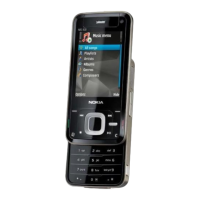7. Set the tuning targets according to the values in the table below
GMSK 1 slot 2 slot 3 slot
850 32.5 dBm 32.5 dBm 30.5 dBm
900 32.5 dBm 32.5 dBm 30.5 dBm
1800 29.5 dBm 29.5 dBm 29.5 dBm
1900 29.5 dBm 29.5 dBm 29.5 dBm
EDGE 1 slot 2 slot 3 slot
850 26,5dBm 26,5dBm 26,5dBm
900 26,5dBm 26,5dBm 26,5dBm
1800 25dBm 25dBm 25dBm
1900 25dBm 25dBm 25dBm
8. Adjust power for all bold power levels to correspond the Target dBm column by pressing + or – keys.
9. If all bold power levels are adjusted, click Next to continue with GSM850 EDGE.
10. Adjust power for all bold power levels to correspond the Target dBm column by pressing + or – keys.
Next actions
Continue tuning the bold power levels of the GSM900, GSM1800 and GSM1900 bands. You will see this
message, if finished successfully:
WCDMA receiver tunings
RX calibration (WCDMA)
Context
Rx calibration tuning routine calculates the real gain values of the WCDMA Rx AGC system. There is also a SAW
filter between front end LNA and mixer in the receive chain, which causes ripple in the RSSI measurement,
this is calibrated out. The SAW filter is intergated into RF ASIC N7500.
Rx calibration can be done in two different ways, manual tune and sweep mode tune. If the signal generator
in use supports frequency sweep table, the calibration is done in one step.
RM-179; RM-223
RF troubleshooting
Page 4 –42 COMPANY CONFIDENTIAL Issue 1
Copyright © 2007 Nokia. All rights reserved.

